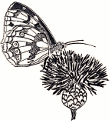User guide on how to use Social Media.
Download our Social media guide
The latest AGM Minutes 2024
Antennae – Issue 71, Spring 2025
Annual Photographic Competition
View the video compilation of the winning photographs – Butterfly Photographer of the Year 2024
View the video compilation of the winning photographs – Butterfly Photographer of the Year 2023
Gloucestershire Branch Annual Photographic Competition
The annual photographic competition is free and open to all members of Gloucestershire
Branch and their children and grandchildren.
All entrants must be a member of Gloucestershire Branch of Butterfly Conservation or the
child or grandchild of a member.
All images must be the entrant’s own work and they own the copyright for them.
None of the images submitted have been published elsewhere or have won a prize in any other photographic competition.
Butterfly Conservation Gloucestershire Branch can reproduce, enlarge, publish or exhibit, on any media, any of the images entered into the 2024 photography competition, for any purpose connected with Butterfly Conservation.
There will be 4 categories
1. UK Butterflies
2. UK Moths
3. Overseas Butterflies and Moth
4. Immature Stages
Send up to three photos in each category as JPEG attachments by email to reach Simon Fenner at simonf@gloucestershire-butterflies.org.uk by 13th October 2025
The winners will be announced at the Annual Members Meeting on 26th October 2024 after we have viewed all the entries during the meeting.
AGM Agenda 2024.pdf and the AGM Minutes 2023
GDPR and Recording
GDPR-guidance-for-BNM-NMRS-County-Recorders-May-2018.pdf
Anyone submitting either butterfly or moth records should be aware Butterfly Conservation’s position on GDPR.
Butterfly Recording
Antennae-Butterfly-Recording-article-2016.pdf
Article from Spring 2016 issue of Antennae with information about butterfly recording. This also includes the ‘White Squares’ map for years 2000-2014 that followed the article.
Antennae-Butterfly-Recording-article-2015.pdf
Article from Spring 2015 issue of Antennae that is referred to by the article above.
White Squares .pdf
The white square map showing the distribution of butterfly records, has been updated since the 2016 article above. We still desperately need volunteers to record in the ‘white’ areas – these are areas for which there are no records. If you live in or near these places or regularly visit them and can confidently identify butterflies, please could you do some butterfly recording there? It may only involve a couple of visits, but more if you get the bug! Please submit your records on a casual recording form – see instructions in red.
Please contact Chris Wiltshire, the County Butterfly Recorder at butterfly-recorder@gloucestershire-butterflies.org.uk or Vic Polley, Assistant Butterfly Recorder at vic@gloucestershire-butterflies.org.uk if you have any queries.
The recording forms below are provided in Excel format. The files can also be opened with free spreadsheet programs such as LibreOffice and OpenOffice. It is a big help if they can be used and emailed because this saves re-typing and the possible introduction of errors.
Please email casual recording forms to Chris Wiltshire at butterfly-recorder@gloucestershire-butterflies.org.uk. Key site and habitat forms should be sent to Tricia Atkinson at vice-chair@gloucestershire-butterflies.org.uk and to your area coordinator.
Butterfly-Key-Site-Recording-Form.xls
Butterfly Key Site Recording Form.
Butterfly-Casual-Recording-Form.xls
Butterfly Casual Record Form for recording site/locality, OS Map reference, habitat type, date, and butterfly seen.
Habitat-Form.doc
Habitat form for use of recorders.
Key butterfly sites surveyed
A summary of the key sites surveyed and the butterflies recorded since 2009 is available on request from Tricia Atkinson at vice-chair@gloucestershire-butterflies.org.uk.
Reserves
Rough-Bank-Leaflet-A4.pdf
This is the new (2018) leaflet in a form that can be printed on an A4 printer – unfortunately it means that the map gets split across two pages! The paper version is A3 size and will be available at all Gloucestershire branch events from summer 2018.
Here are some pages about the species found on Rough Bank:
Butterflies, Moths, Rare and scarce moths, Other invertebrates.
Prestbury-Hill-Leaflet.pdf
This is the content of the Prestbury Hill leaflet but in a form that can be downloaded and printed. The leaflet itself is a single A3 sized sheet.
Gloucestershire Branch AGM Minutes
AGM minutes-2023.pdf
AGM-minutes-2022.pdf
AGM-minutes-2021.pdf
AGM-minutes-2020.pdf
AGM-minutes-2019-10-26.pdf
AGM-minutes-2018-10-27.pdf
AGM-minutes-2017-10-28.pdf
AGM_Minutes_2016-10-29.pdf
AGM_Minutes_2015-11-07.pdf
Reports
State-of-Nature-Report-2013.pdf
This was the original State of Nature report. The partnership producing the report consisted of 25 organisations.
State-of-Nature-Report-2016.pdf
For the second State of Nature report the partnership producing the report has grown to more than 50 organisations.
Atlas of UK Butterflies 2015-2019
This report presents UK distribution maps for all resident and regular migrant butterfly species (apart from the Large Blue Maculinea arion) based on the most recent five-year survey of the Butterflies for the New Millennium (BNM) recording scheme (2015-2019). (The report is not available in printed form.)
Landscape-scale-Conservation-For-Butterflies-And-Moths-Report.pdf
The report Landscape-scale conservation for butterflies and moths: lessons from the UK by Sam Ellis, Nigel Bourn and Caroline Bulman provides concrete evidence that projects aimed at conserving butterflies and moths at a landscape-scale have enabled threatened species to flourish after decades of decline. A landscape-scale approach works by improving and connecting land for wildlife by the coordinated conservation management of numerous sites for a range of species across a large natural area.
Butterfly-Effect-Progress-Report.pdf
This is Matt Brierley’s final report for the Butterfly Effect project.
Other Documents
Books-and-websites.pdf
Some useful books and websites for butterflies and moths. Also a few of the useful places on Butterfly Conservation websites.
Prinknash-Plant-List.pdf
A list of all the plants in the Prinknash Butterfly Garden.
Prinknash Leaflet
Information leaflet about the Butterfly Nectar Garden.
Bill_Smyllie_Papers.pdf
This is a short introduction to the papers by Bill Smyllie that follow. It contains some background, references and links.
Underwing-Ocelli.pdf
Some data from Bill Smyllie about the variation underwing eye-spots on Brown Argus and Common Blue butterflies and a possible link to hybridisation.
2016_Underwing_Ocelli.pdf
This reports on further research done in 2016.
Gloucestershire-moth-recording-areas.pdf
Most biological record keeping is based on vice-counties. The vice-county (VC) boundaries were defined in the 1850s and since then have provided a constant reference for all kinds of records. However, since that time there have been several county boundary changes, e.g. Avon has been and gone, Rutland went and came back, etc., so that the modern county boundaries do not always match the vice-counties.
Gloucestershire has two vice-counties, VC33 and VC34. This map, together with its notes, was produced by Robert Homan and shows where those VC boundaries are, how they are split between the three moth recorders and how county boundary changes have created strange anomalies around the edges of the county.

 Internal Pages
Internal Pages

